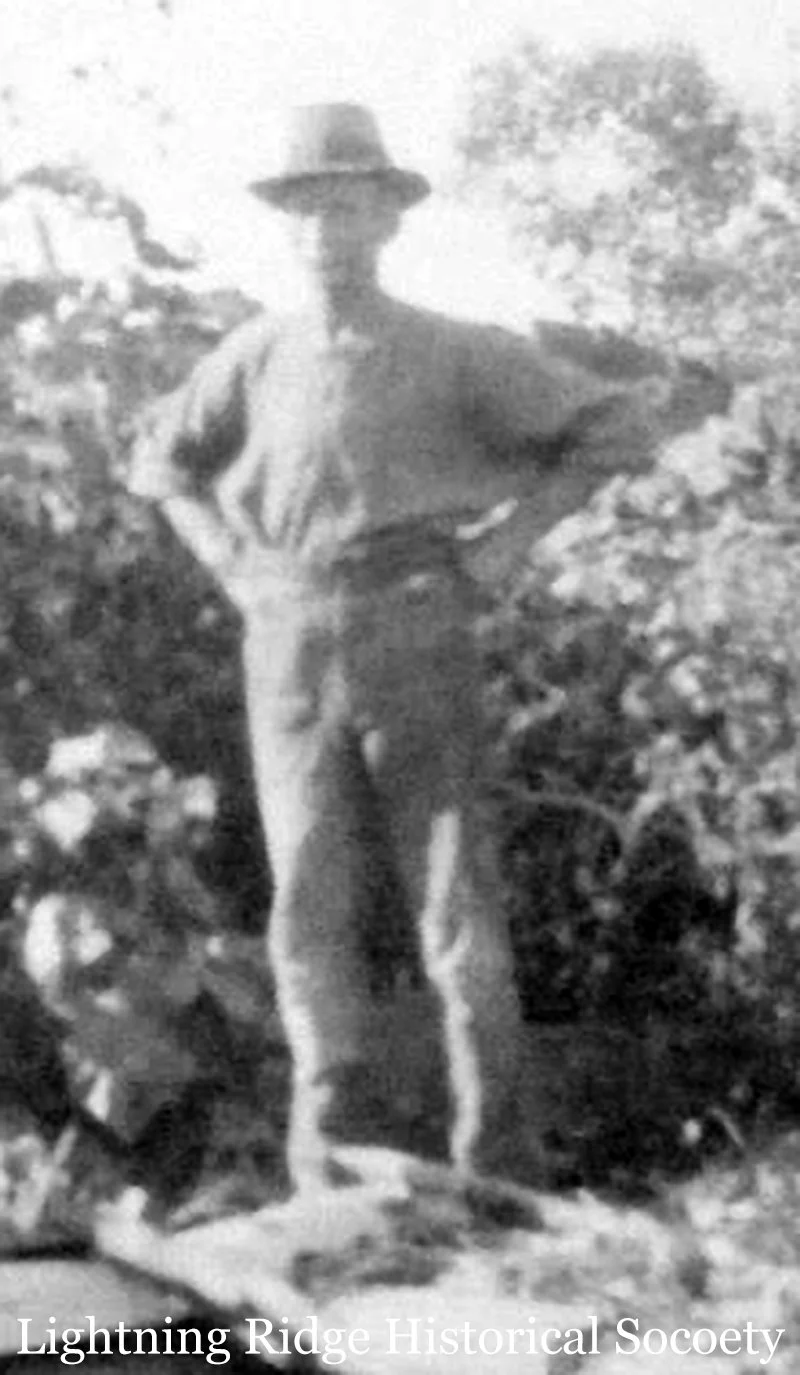Walter Bradley
Walter Stanfield Bradley was born on 29 January 1871 in Yorkshire, England, the son of John Bradley and Lavinia Snape. He enlisted in the York and Lancaster Regiment in 1891 and served with the British Army in India. He married Edith Swift in Selby in 1903, and they had two children before his eventual migration to Australia.
Bradley settled at Lightning Ridge by at least 1912. There he formed a lifelong working partnership with “Irish” Joe Hegarty. The two lived and worked together for more than 40 years without a quarrel; Bradley the gardener, Hegarty the cook. Their quiet, orderly lifestyle earned them the nickname “the two old ladies”. They cultivated vegetables, maintained a hand-dug tank to collect water, and swam in it during the hottest months.
Joe Hegarty and Walter Bradley.
Bradley and Hegarty were close friends with fellow miners Jack Phillips, Phil James, and Mick Pendergast. They worked several fields together, including claims at Hawk’s Nest, Cleared Line, and Vertical Bill’s. At Hawk’s Nest, they once sold a parcel of 30 stones for £350.
Bradley is best remembered for his remarkable find at Bald Hill — In 1915-1916, Bradley, Hegarty, and Phillips were sinking drives on an old claim when Bradley’s pick struck a large black nobby about 35 feet in. The stone was carefully snipped, showing a rich colour bar all the way around. Bradley, the most skilled opal cutter of the three, was entrusted to cut and polish the specimen. After polishing, the full beauty of the stone was seen: a flat, triangular opal with a raised central dome that flashed red and gold, encircled by a band of deep blue-green. The miners sold the stone for just £93.
Now known as The Flame Queen, the 263.01 carat gem is one of the most famous opals ever discovered at Lightning Ridge.
Bradley mined in the area into the 1920s, working another promising claim at Bald Hill in 1926. He remained at Lightning Ridge for much of his later life, until his death on 9 February 1954, aged 83. He was buried in Walgett, New South Wales.
Article: Research by Leisa Carney, edited by Russell Gawthorpe. LRHS research compiled by Len Cram and Barbara Moritz. Sources: The Lightning Ridge Book, Stuart Lloyd, 1967, pp. 39-39; Lightning Ridge - The Home of the Black Opal: Unique to the World, Gan Bruce, 1983, p. 78; Walgett Spectator, 25 February 1926.


